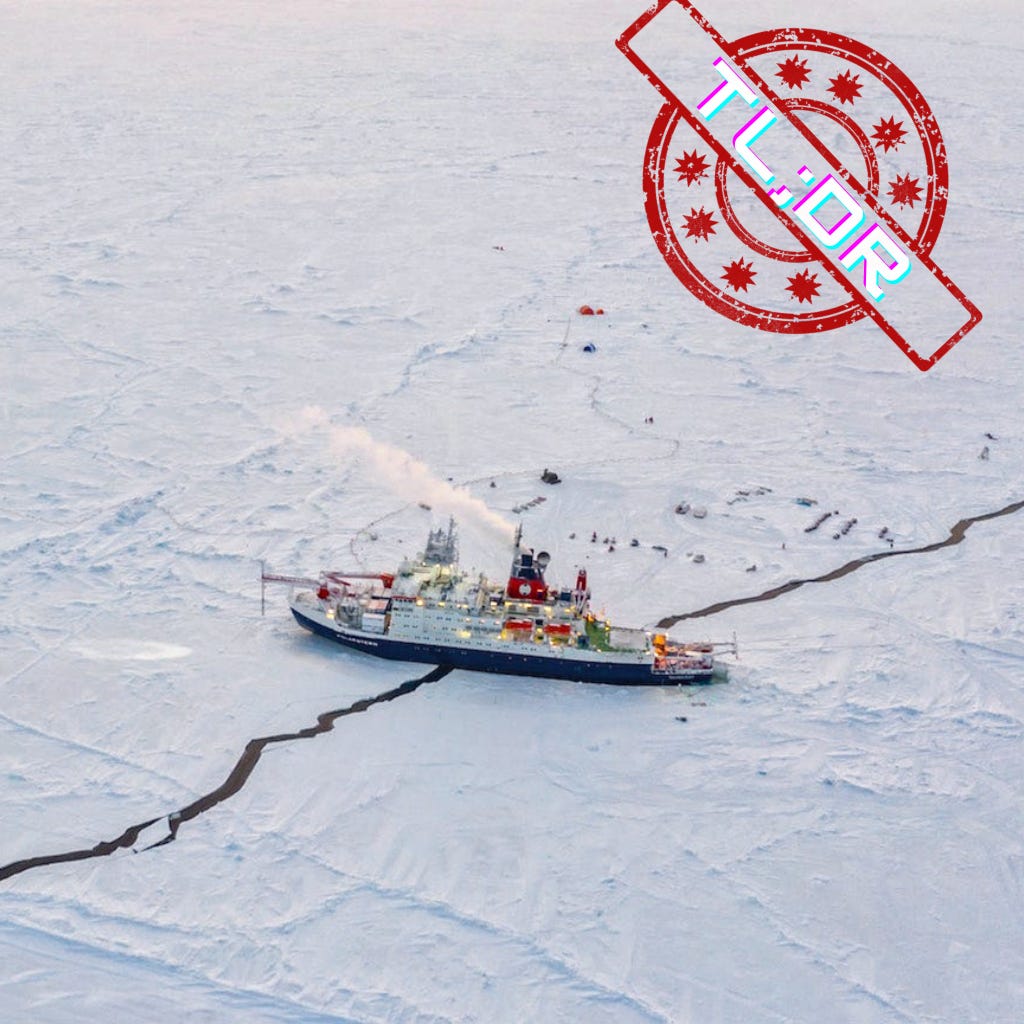I know you’re busy… so i’ve included Tl;DR version. This version will have less gifs and images, but you’ll get the gist.
Thawing Ice, Clearing Routes
Arctic ice melt is opening new shipping routes, potentially enabling ice-free summers within a decade. This could alter global shipping economics, challenging established routes like the Suez and Panama Canals. The changing Arctic landscape is causing multiple ripple effects, with shipping being one of the most significant.
Need for (nautical) speed
Shorter Arctic routes offer faster, cheaper shipping options. Three main routes are emerging, each with its own characteristics and challenges:
Northern Sea Route (NSR)
Connects Europe and Asia along Russia's coast, potentially saving 40-50% voyage time compared to the Suez Canal.
Russia claims control, leading to geopolitical tensions.
The NSR stretches from Murmansk to the Bering Strait, covering 5,600 kilometers of rough, icy waters.
Northwest Passage (NWP)
Links Atlantic and Pacific oceans through Canada's Arctic Archipelago.
Competes with Panama Canal but faces infrastructure challenges.
Canada claims ownership, which is contested by other nations.
The NWP has been officially open to ships without icebreakers since 2007.
Transpolar Sea Route (TSR)
Crosses the North Pole, offering the shortest Arctic route.
Currently heavily frozen and least developed.
Spans 3,900 kilometers and is not within any nation's Exclusive Economic Zone, making it potentially less contentious.
Hold your Icebreakers
Arctic shipping faces significant challenges:
Lack of infrastructure (ports, rescue capabilities, access roads)
Unreliable ice conditions and need for consistent openings
Geopolitical tensions that could disrupt commerce
Requirement for specialized ice-class ships and icebreaker support
Ok great, who cares?
Arctic shipping impacts various stakeholders:
🗺️Governments: Changes in power dynamics and control over strategic routes
🛳️Shipping companies: New route opportunities, but also new risks and investments
🛒Retail companies & manufacturers: Potential cost savings, but also supply chain uncertainties
🧑🤝🧑Consumers: Possible cheaper goods, but environmental and geopolitical concerns
The Reconfiguration of the Arctic presents both opportunities and risks, requiring careful consideration of economic benefits against environmental and geopolitical costs. It raises questions about the long-term implications of prioritizing shorter shipping routes over environmental stability.
Not every aspect of the Reconfiguration can be prevented, but we have agency in how the Arctic's future takes shape. We can choose to collaborate, protect native flora and fauna, and reduce fossil fuel dependency to mitigate ice thawing.
The Arctic exemplifies a key challenge of the Reconfiguration: where we need agency most, we often find ourselves caught in the (ice-free) undertow.
Next time we'll explore another angle of the Arctic: Resources! See you then.



